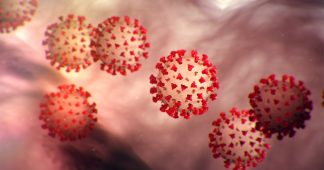By Walter Scheirer
Jul 20, 2020
ABSTRACT
What can epidemiological models tell us about our potential exposure to COVID-19? What progress is being made with regard to coronavirus vaccine development? These days, the general public is asking these questions and more as the COVID-19 pandemic rages on. That there is an extraordinary level of interest in coronavirus news should come as no surprise, but this elevated interest society now has in pandemic-related science has unintended consequences that shouldn’t be ignored. Studies are being rushed to publication even in well-regarded journals. Unvetted articles on so-called preprint servers have received enormous attention. Predatory journals are giving anyone with the ability to pay the opportunity to publish pseudoscience that can be amplified by mainstream news sources. Marketers are exploiting the public’s desperation for protection against COVID-19 and adding a scientific sheen to dubious products. And perhaps-well-meaning experts in data science are producing a raft of arguably meaningless research, creating a distraction at best and wasting valuable resources at worst.
Never before in history has humankind been so prepared to face a deadly pandemic. Our meticulous understanding of infectious agents, life-saving technologies, and sophisticated epidemiological models all mean the COVID-19 pandemic shouldn’t be as deadly as it might have been in a previous era. Scientific research will no doubt lead to an effective preventative treatment for COVID-19 in due time.
Countries and institutions around the world are investing heavily in vaccines, treatments, and research into the epidemiology of COVID-19, and to quench the public’s thirst for information, the news media is reporting on each development at a feverish pace. Prominent sections of news sites such as The New York Times, or The Washington Post have essentially been transformed into running scrolls of up-to-the-minute coronavirus news.
The public’s level of interest in science is high and many people of varying expertise have become eager to weigh in on COVID-19 in the media or on social platforms. Scientists in some fields such as epidemiology have even taken to Twitter to police who is and who isn’t a legitimate expert in certain subfields. But there are some unintended effects of the elevated importance society is placing on scientific endeavors surrounding the pandemic that shouldn’t be ignored.
Studies are being rushed to publication even in well-regarded journals. Unvetted articles on so-called prepress servers have received enormous attention. Predatory journals are giving anyone with the ability to pay the opportunity to publish pseudoscience that has been amplified in mainstream news sources. Marketers are exploiting the public’s desperation for protection against COVID-19 and adding a scientific sheen to dubious products. And perhaps well-meaning experts in data science are producing a raft of arguably meaningless research, creating a distraction at best and wasting valuable resources at worst.
Compared to public health crises of the recent past, there has been a distinct change in how science is communicated to the public. Experts no longer control the narrative through trusted outlets, and, accurate or not, social media allows anyone to craft their own narrative about science and publish it to an audience of millions.
Much like other contemporary cases of disinformation, this is happening because of the open nature of the internet (Woolley and Howard 2019; Yankoski, Weninger, and Scheirer 2020). Furthermore, the “shelter in place” orders many people have been living under mean that a substantial part of the global population has been spending considerably more time staring at their phones and computers, sifting through pandemic-related information. A larger than usual audience is taking in pseudoscientific conspiracy theories, medical scams, and even well intentioned, but half-cocked scientific work. Good science can be twisted in this environment. Perhaps no better example can illustrate how the coronavirus era has been shaped by this phenomenon than the story of bat soup.
An illegitimate coronavirus origin story and its legitimate origins
Shortly after reporting began on the outbreak of the novel coronavirus (later dubbed SARS-CoV-2) in Wuhan, China, in January, the general public was already well aware of the alleged origin of the virus: bats. Chinese doctors initially suspected that what they were seeing in Wuhan was a resurgence of SARS, a disease caused by the coronavirus SARS-CoV-1 which caused a deadly but limited outbreak from 2002–2004 (Green 2020). They were quick to draw on existing biological research pointing to bats as likely natural hosts of the virus.
While SARS-CoV-2 has proved to be distinct from the earlier pandemic coronavirus (Bar-On et al. 2020), the two still share significant genetic similarity (the viruses share 80 percent of their nucleotides), and published studies linking SARS-CoV-1 to coronaviruses harbored in bats (Lau et al. 2005; Li et al. 2005) were a natural starting point for scientists hunting for the origin of the novel coronavirus.
In 2020, genome sequencing is fast and accurate, and a genetic match was immediately established (Andersen et al. 2020): the nucleotide identity of a coronavirus found in bats had a 96 percent genetic similarity to SARS-CoV-2 (Bar-On et al. 2020). But if bats are the true origin of SARS-CoV-2, how did people come in contact with them in the first place?
This is where the narrative begins to veer away from evidence-based science and into the realm of fantastic speculation. The outbreak in Wuhan was reported to have started on December 12, 2019, with a group of employees at the Huanan Seafood Wholesale Market, a so-called wet market where live and freshly killed animals are available for purchase (Zhou et al. 2020). In spite of a persistent Western stereotype that Asians prefer unusual cuisine, the practice of selling exotic animals is not widespread in such markets (Palmer 2020). Here genetic evidence, a seafood market, racial stereotypes, and an already heated East-West political divide all collided to form an imaginary cross-species jump for SARS-CoV-2: bat soup.
In January 2020, a repurposed digital video surfaced of Chinese travel vlogger Wang Mengyun dining on bat soup in the Pacific island nation of Palau (Figure 1 Left), where fruit bats are served to tourists as a novelty (Lubba 2015). Inspired by Wang’s video, Internet trolls and tabloid news outlets sought out more tourist footage from Palau, claiming that all of it was from China, where wild-seeming dishes were common (with ingredients readily available at the local wet market) (Thomson 2020; RT 2020). In fact, bat soup does not belong to any regional cuisine within China, and all extant photographic claims lead back to Palau (Mas 2020). Wang received death threats and even apologized for the video, which she stressed had been filmed in Palau (The New York Times 2020), but the Chinese bat soup story stuck, and continued to spread.
Read more at www.tandfonline.com










